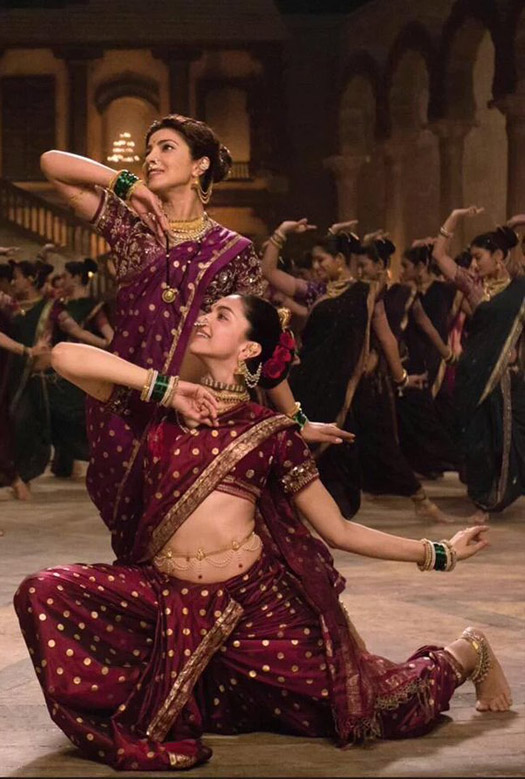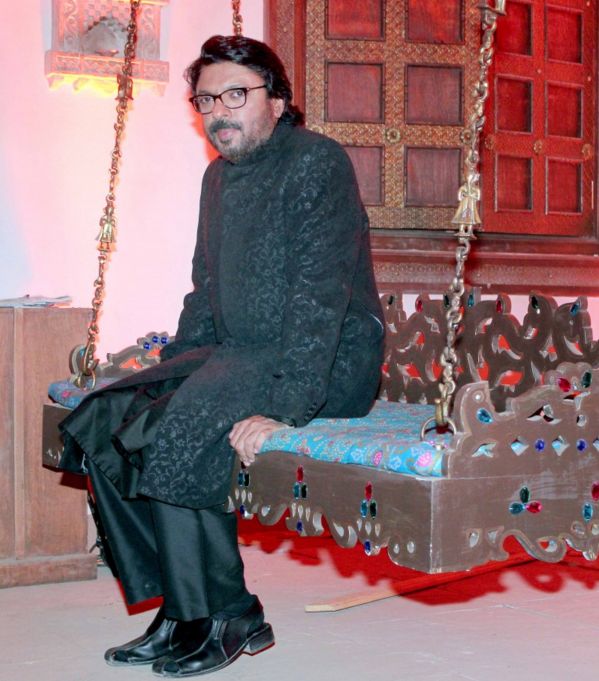First, a confession: I am a card-carrying member of the Cult of Sanjay Leela Bhansali. Our clubhouse is a decrepit haveli, where we meet every full moon to dance, cry, light diyas, and compose metaphorical verses comparing our lovers to sour lemons and various other fruits and vegetables. And at the end of the night, we plan our color scheme for the next meeting. We try to steer clear of blue and black (too many painful memories).

What I’m trying to say is, I think there is a lot of genius involved in Sanjay Leela Bhansali’s brand of cinema. I’m not saying it’s perfect; could he do with some self-editing? Sure. Could his scripts benefit from a few more drafts to tighten them up? Of course. But you can’t deny that he’s delivering a kind of cinematic experience that no one else in the industry is even attempting. You might love it, you might hate it, but either way it will evoke a passionate response.
Which is why I was unsurprised to find, upon waking up this morning, hundreds of tweets, blog posts, and news items dissecting Pinga, the newly released song picturization from Bhansali’s upcoming epic Bajirao Mastani. Any dance number featuring Deepika Padukone and Priyanka Chopra, two of Bollywood’s foremost young actresses, is bound to cause a stir. After all, it so rarely happens that we get to see two A-list actresses interacting onscreen, let alone in the grandiose setting of a Bhansali period film. But Pinga is attracting attention for another reason: its similarity to another two-heroine dance number, the iconic Dola Re from Devdas.
13 years separate Pinga and Dola Re, but the parallels are undeniable. Both numbers feature the reigning Bollywood queens of their day: Dola Re had Madhuri Dixit, the veteran superstar, and her presumed successor Aishwarya Rai, while Pinga features crossover sensation Priyanka alongside Deepika, India’s Heroine No. 1. Each number is built around the romantic tension between characters in two familiar Indian stories, one being the fictional love triangle between Devdas, Paro and Chandramukhi, and the other the historical romantic entanglement of famed Marathi warrior Baji Rao and his wives Kashibai and Mastani. Shreya Ghoshal’s angelic vocals even feature on both tracks. And perhaps the strongest basis for comparison comes from the film’s own team, who pitched Pinga as a serious contender to rival Dola Re’s iconic status.
But as it turns out, Pinga is no match for Dola Re, and fans have certainly noticed. And how could it have been? Pinga is a Lavani number choreographed by Remo D’Souza, a self-taught dance guru who is nevertheless heavily inspired by contemporary dance. Dola Re, on the other hand, was the brainchild of the inimitable Saroj Khan, who masterfully drew from classical Indian dance forms—mainly Kathak and Bharatnatyam—to create a traditional number that was entirely within her wheelhouse. But the biggest advantage that Dola Re has over Pinga is the fact that it was picturized by two actresses who were classically trained dancers in their own right, and known specifically for their dancing prowess. Priyanka and Deepika may be standouts amongst the newer lot of actresses, but Madhuri Dixit and Aishwarya Rai are Bollywood’s last truly great dancers. After all, superior dancing abilities were expected from their generation; today, creative editing and heavy doses of sex appeal can easily make up for a lack of technical skills. It is, as they say, a whole new ballgame, and today’s actresses are playing by different rules.

The point here is not to run down Priyanka and Deepika; they have their own individual strengths that set them apart from their peers. But the truth is that they’re no Madhuri and Aishwarya, nor should they have to be. The legacy those two women built for themselves cannot be replicated, and it would be unfair to expect Priyanka and Deepika to fill their shoes. If the audience is comparing them unfavorably to their predecessors, the blame must land squarely upon Bhansali’s shoulders. Through carefully planned visual leaks and insinuations made by his PR team, he promised a new age Dola Re…a promise that was nearly impossible to make good on with two untrained dancers, an ill-suited choreographer, and subpar musical composition. The audience may be disappointed, but that’s to be expected when you try to recreate a masterpiece with budget materials.
And that is the curse of being Bhansali. Between Hum Dil De Chuke Sanam and Devdas, he peaked in terms of both story and spectacle at the very beginning of his career itself, and all subsequent attempts to recapture that magic have seemed derivative at best and lazy at worst. Where can you go once you’ve already reached such high peaks? The only answer is to find a new mountain to climb.
If you’re able to force yourself to forget about Dola Re entirely, you might find that Pinga is actually a beautiful number all on its own. It’s upbeat and playful, and the lead actresses have an interesting chemistry that invites curiosity about the dynamic between their respective characters. Priyanka and Deepika are undeniably immense talents; they are the future of the Hindi film industry, and we do them a disservice by comparing them to legends past.
So this is a plea to Bhansali from a devoted fan: such a beautiful mind should not be wasted trying to reclaim former glory. Instead of sabotaging both yourself and your actors by humoring comparisons to your past successes, set your eyes on introducing your unique cinematic perspective to a different kind of visual storytelling, the kind that only you can create.

And for all those fans expressing their dissatisfaction with Pinga, let me remind you that Bhansali is a gift. Even a mediocre SLB number is better than 90% of the song picturizations other contemporary directors are creating. Someone with his flair for visual opulence comes around once in a generation, and personally, I’d take a hundred Pinga’s playing on loop over a film whose entire budget has been poured into lazy song sequences and cars flying through the air willy nilly (not naming any names, of course). You can always rewatch Devdas to fill the hole Dola Re has left, but if find yourself thirsting for a lavish new love story to immerse yourself in this year, Bajirao Mastani—imperfect though it may be—is the only film capable of satisfying that craving. Let’s enjoy it for what it is, and hope that Bhansali learns from his mistakes the next time around.
